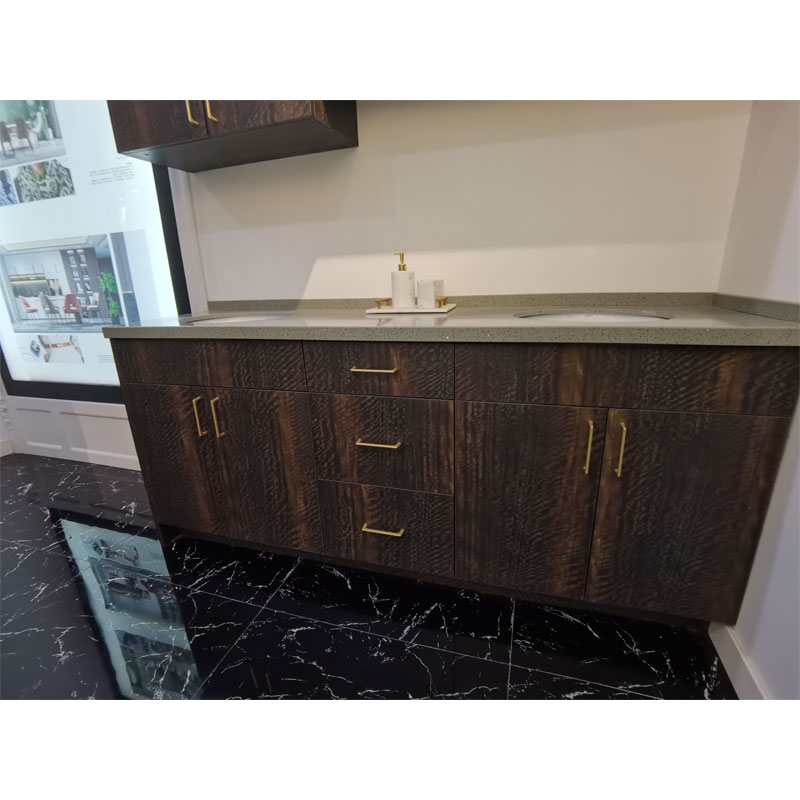Choosing the Perfect Bathroom Vanity: A Comprehensive Guide
2024-08-05
Introduction
The bathroom vanity is more than just a functional piece of furniture; it's a central element that defines the style and functionality of your bathroom. With so many options available, selecting the perfect vanity can be a daunting task. This guide will walk you through the key considerations to help you choose the ideal bathroom vanity for your home.

1. Assessing Your Space
Before you start shopping, measure your bathroom to determine the available space for your vanity. Consider the following:
- Width and Depth: Ensure the vanity fits comfortably without obstructing movement or other fixtures.
- Height: Standard vanity height is around 32 inches, but you can opt for higher or lower models based on your needs.
- Plumbing: Check the location of existing plumbing to avoid costly relocations.
2. Determining Your Style
Your vanity should complement the overall design of your bathroom. Here are some popular styles to consider:
- Traditional: Features ornate details, rich wood finishes, and classic hardware.
- Modern: Sleek lines, minimalistic design, and contemporary materials like glass and metal.
- Transitional: A blend of traditional and modern elements, offering a timeless appeal.
- Rustic: Natural wood finishes, distressed details, and a cozy, warm feel.
3. Choosing the Right Material
The material of your vanity plays a crucial role in its durability and maintenance. Common materials include:
- Wood: Solid wood offers a classic look and durability but requires regular maintenance.
- MDF (Medium Density Fiberboard): Affordable and available in various finishes, but less durable than solid wood.
- Plywood: A good balance between cost and durability, resistant to moisture and warping.
- Metal and Glass: Ideal for modern designs, easy to clean but can show water spots and fingerprints.
4. Selecting the Countertop
The countertop is a prominent feature of your vanity. Popular materials include:
- Marble: Luxurious and elegant, but requires sealing and maintenance.
- Granite: Durable and available in various colors, requires sealing.
- Quartz: Non-porous, low maintenance, and available in many styles.
- Laminate: Affordable and versatile, but less durable.
- Solid Surface: Durable and seamless, with integrated sinks as an option.
5. Considering Storage Needs
Evaluate your storage requirements to choose a vanity that meets your needs:
- Drawers and Cabinets: Ensure there are enough compartments for toiletries, towels, and other essentials.
- Open Shelves: Ideal for displaying decorative items or storing frequently used items.
- Custom Storage Solutions: Consider built-in organizers, pull-out trays, or lazy Susans for optimal organization.
6. Sink and Faucet Options
The sink and faucet are integral parts of your vanity. Options include:
- Undermount Sinks: Sleek and easy to clean, mounted beneath the countertop.
- Vessel Sinks: Stylish and eye-catching, sit on top of the countertop.
- Integrated Sinks: Seamless with the countertop, easy to clean.
- Drop-in Sinks: Affordable and easy to install, sit within a hole in the countertop.
Choose a faucet that matches the sink type and overall style of your vanity.
7. Lighting and Mirror Considerations
Proper lighting and a well-chosen mirror enhance the functionality and aesthetics of your vanity:
- Task Lighting: Install sconces or LED strips around the mirror for optimal lighting.
- Ambient Lighting: Overhead lights or chandeliers can add a stylish touch.
- Mirror Styles: Frameless mirrors for a modern look, framed mirrors for a traditional or transitional style.
Conclusion
Selecting the perfect bathroom vanity involves careful consideration of space, style, materials, storage needs, sink and faucet options, and lighting. By taking the time to assess these factors, you can choose a vanity that not only enhances the beauty of your bathroom but also meets your practical needs. Invest in a quality vanity to create a functional and stylish bathroom retreat.


